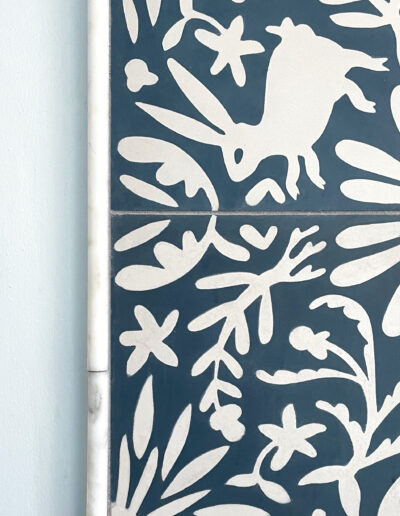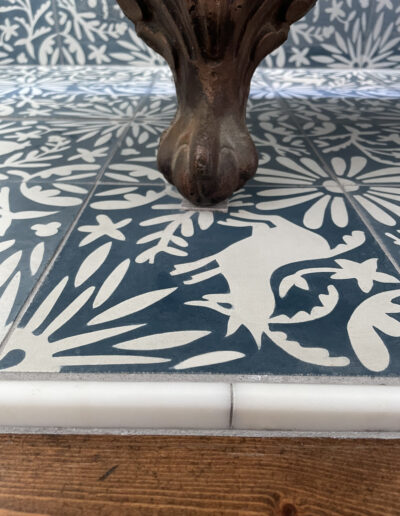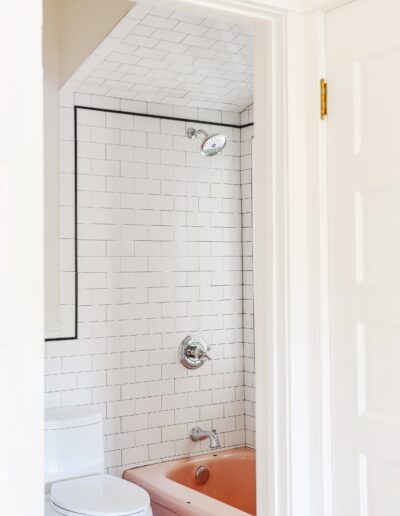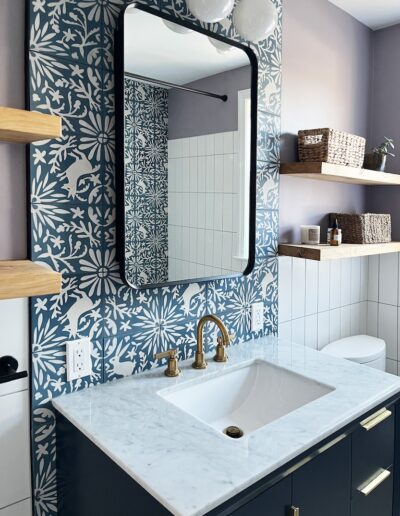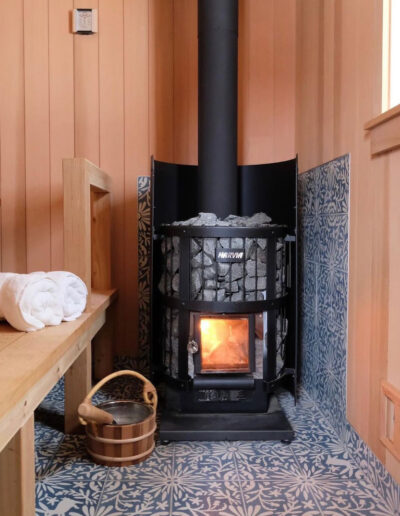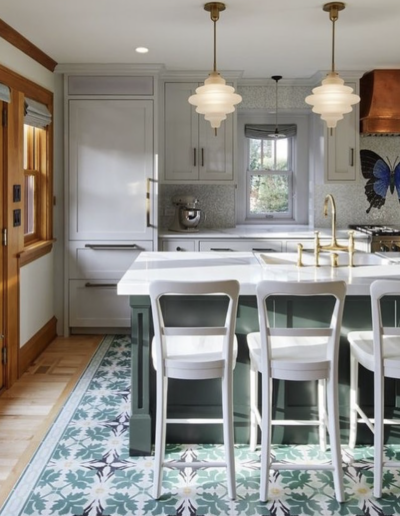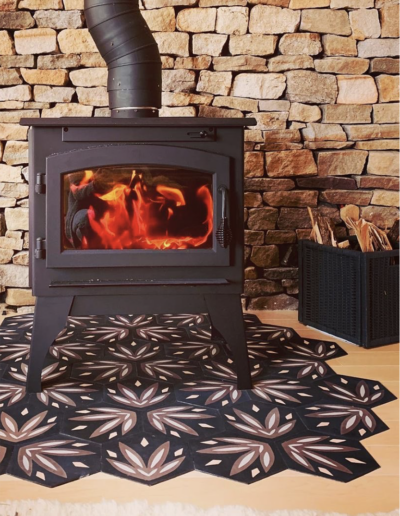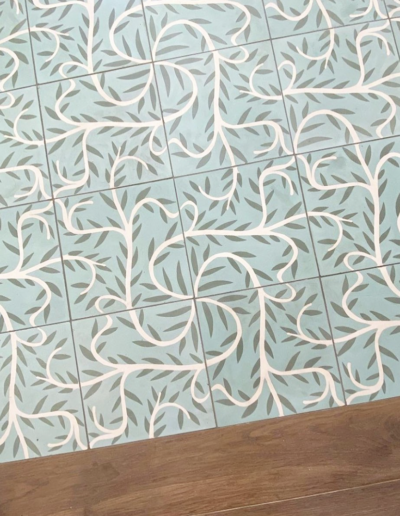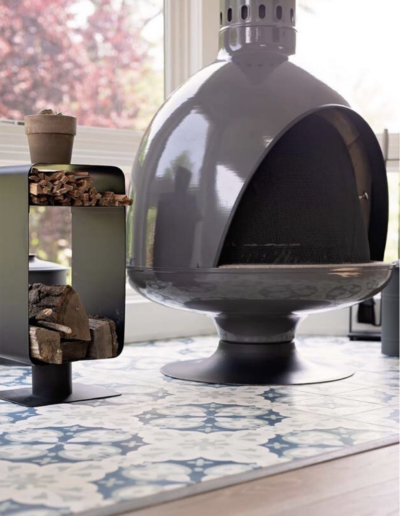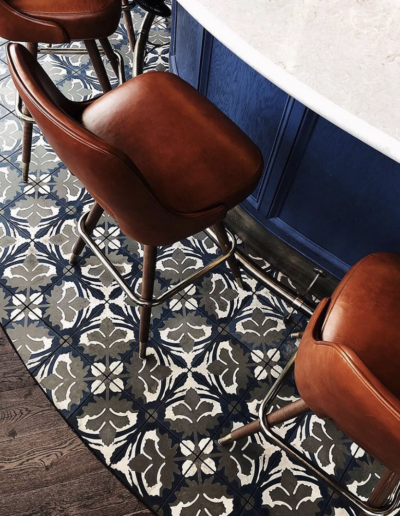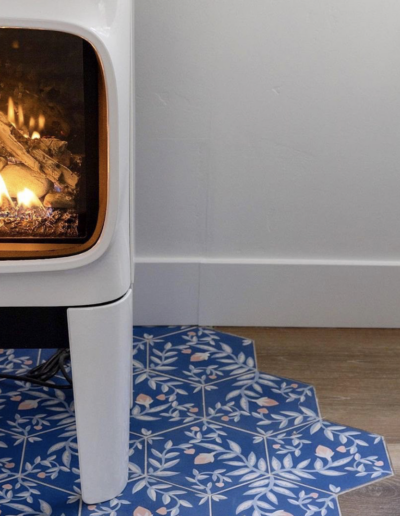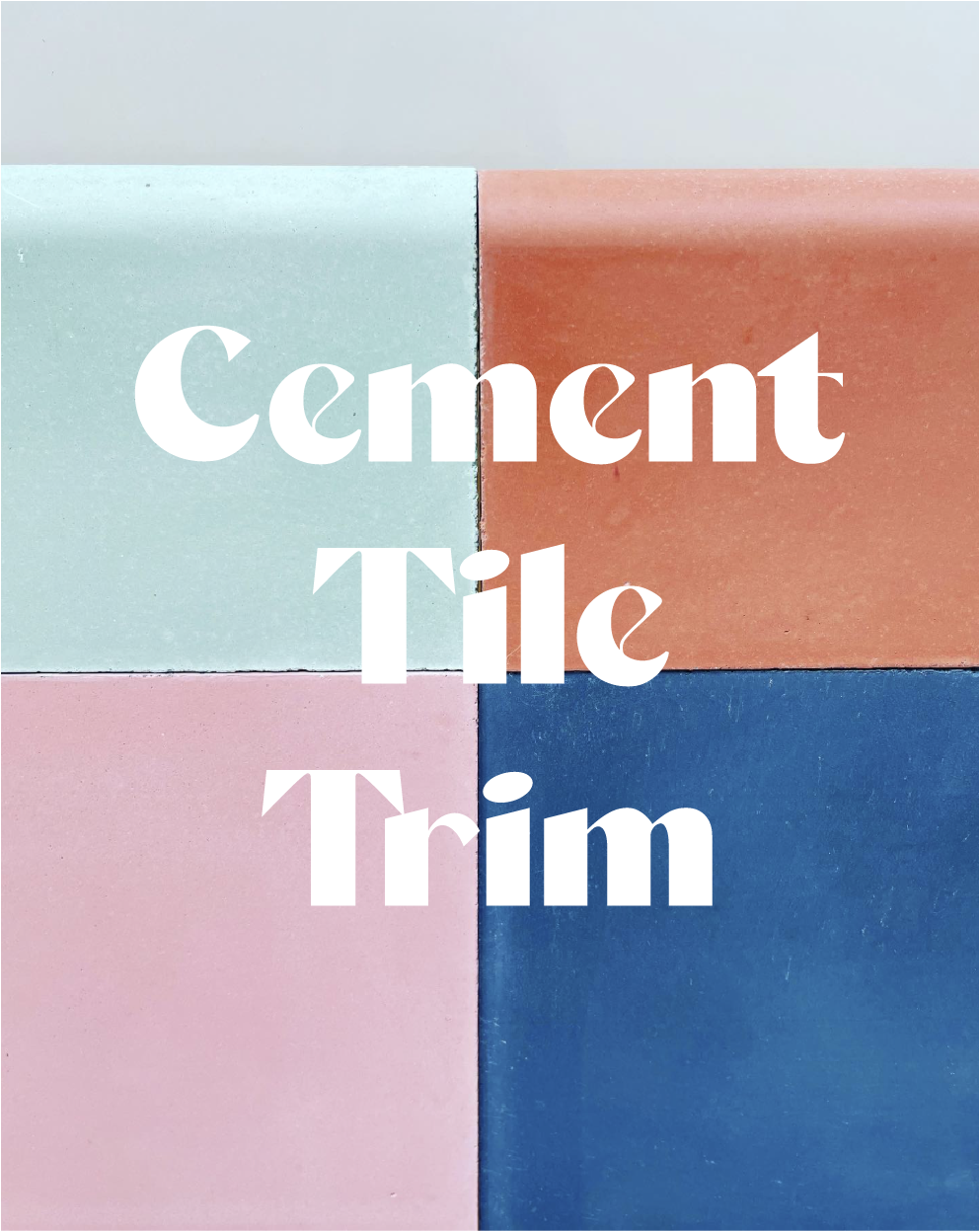
You’ve picked the perfect tile, your grout color is selected, and you know just how you’re going to lay everything out. Now what? For many tile installations, particularly those going on a wall, determining the best way to finish the edges of your tile is next. The following are some suggestions on how to transition your feature tile into the surrounding space, with style.
OPTION 1: BULLNOSE TRIM
One of the simplest tile transitions is bullnose tile. Bullnose can be produced as 4×8 inch or 8×8 inch pieces to match any color in your Grow House Grow field tile. These work well on the wall to cap a backsplash or tile wainscoting, or as a baseboard-style floor trim. Bullnose pieces can also be used in doorway transitions between cement tiles and surrounding floors.
If bullnose is the look you’re going for, it’s wise to consider this ahead of time so we can make, match, and ship your bullnose pieces along with your patterned tiles.
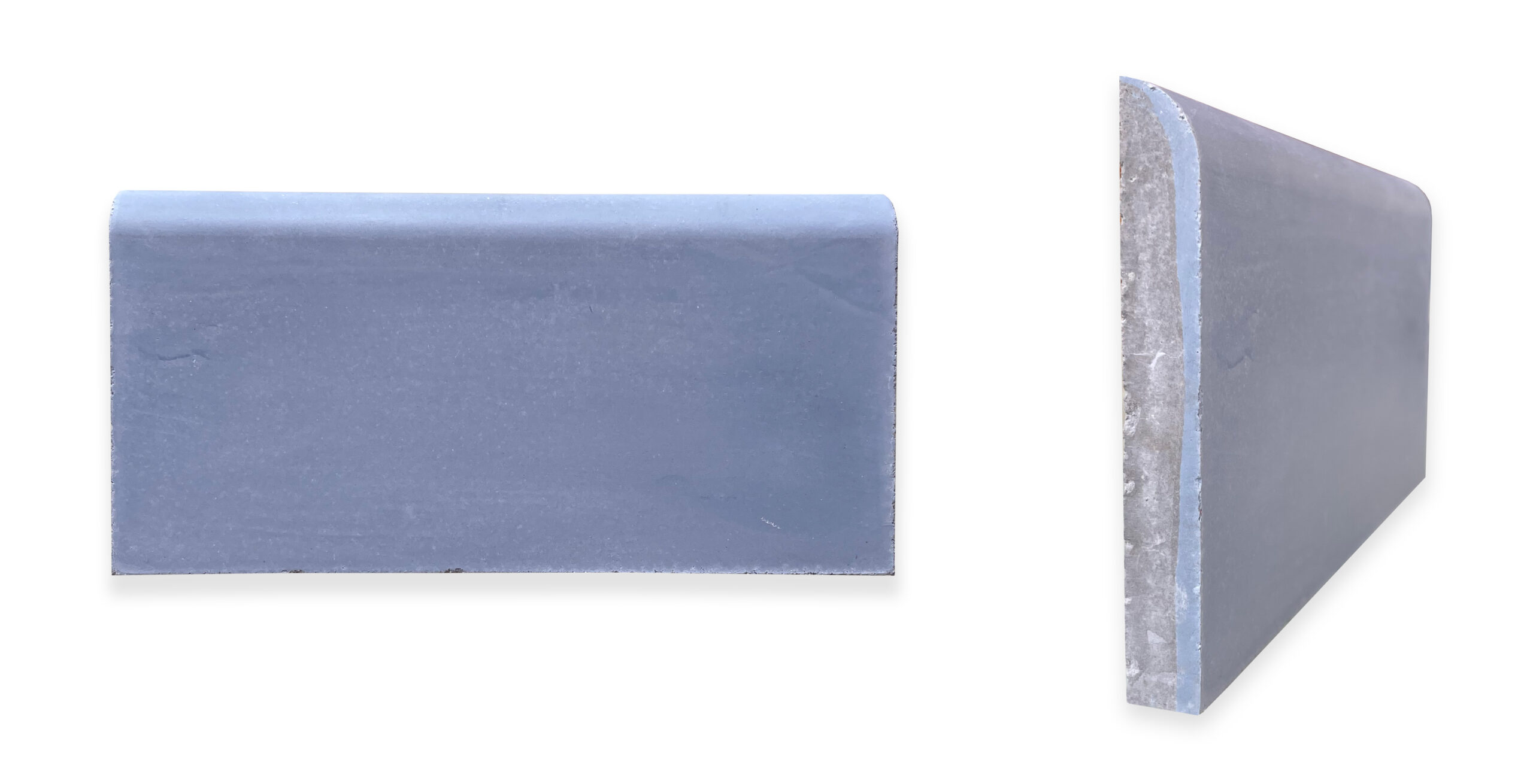
OPTION 2: PENCIL TRIM
With a narrow profile and its classic appeal, pencil trim–depending on how it’s used–can offer a minimalist look or be incorporated as a noteworthy, decorative element all its own. Like bullnose, these can be used both on the floor and on the wall.
In vintage bathrooms and kitchens, pencil trim is often used as a transition between design elements (often in contrasting colors – see image below, far right). These linear details pair nicely with both patterned tile, and classic solid-color pieces.
One of our favorite options is 5/8ths inch marble pencil tile, which pairs nicely with the natural materials featrured in cement.
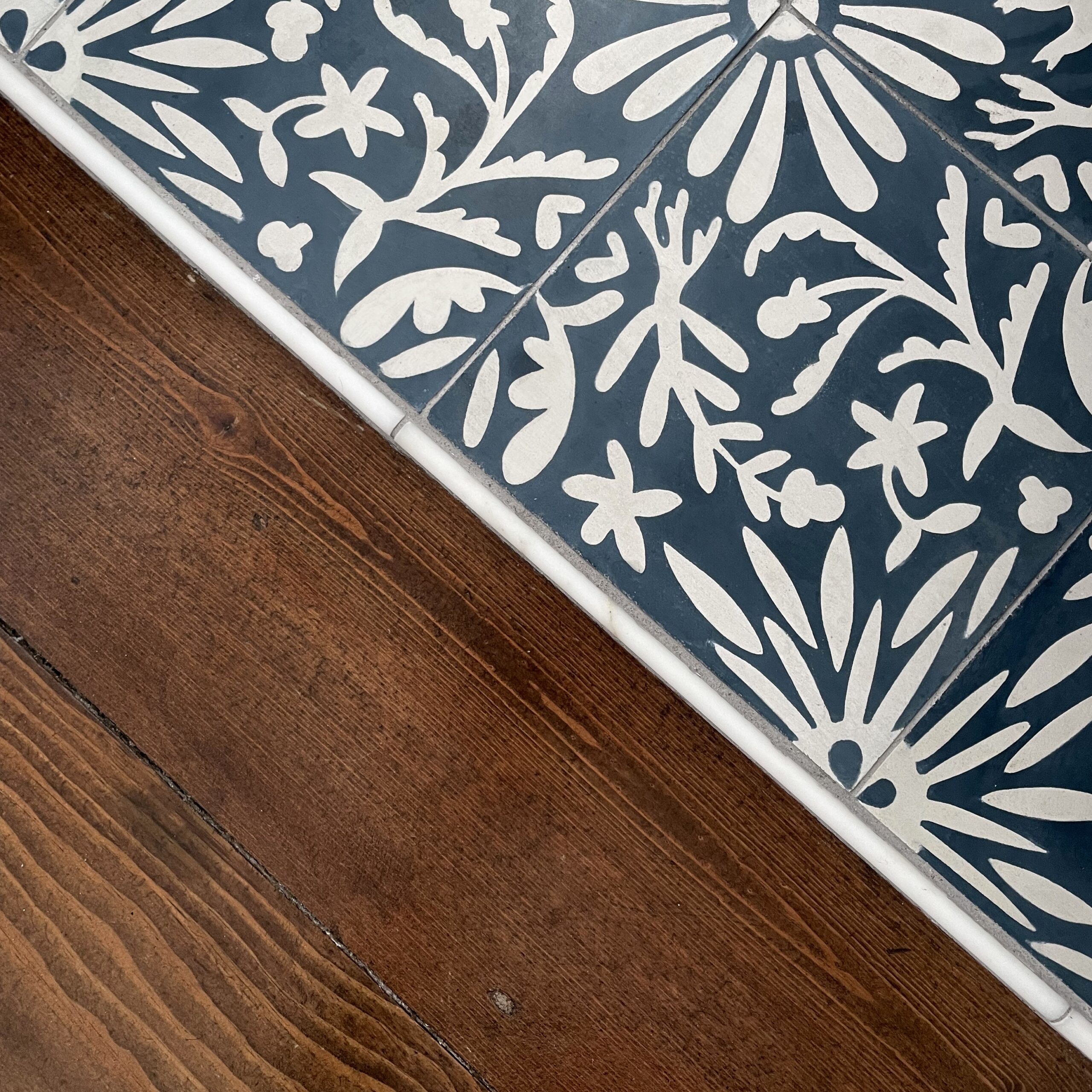
OPTION 3: SCHLUTER SYSTEMS SCHIENE
Looking for a modern finish? Schluter Systems has a variety of metal fits for both open edged tile and tile-to-floor transitions. For our cement tiles, we recommend the 0.625 width (5/8ths inch).
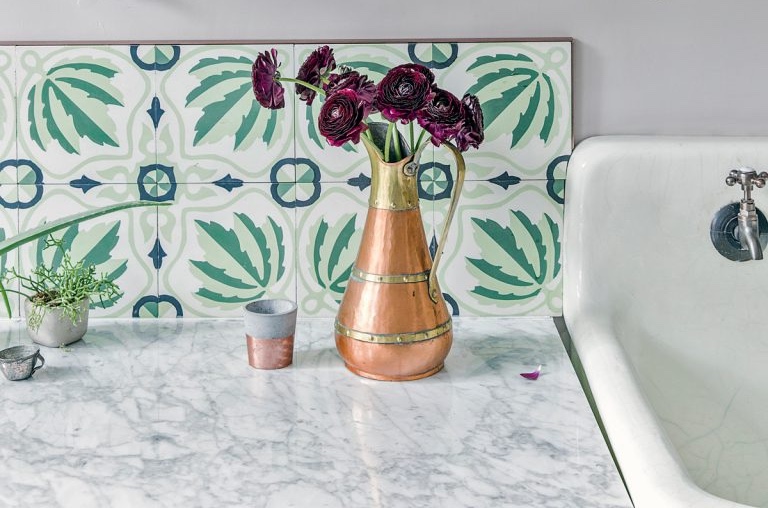
OPTION 4: TILE-TO-WOOD TRANSITION
If woodworking is in your wheelhouse, creating a flush tile-to-wood transition is a delightful blend of organic and hard material.
Happy tiling!


